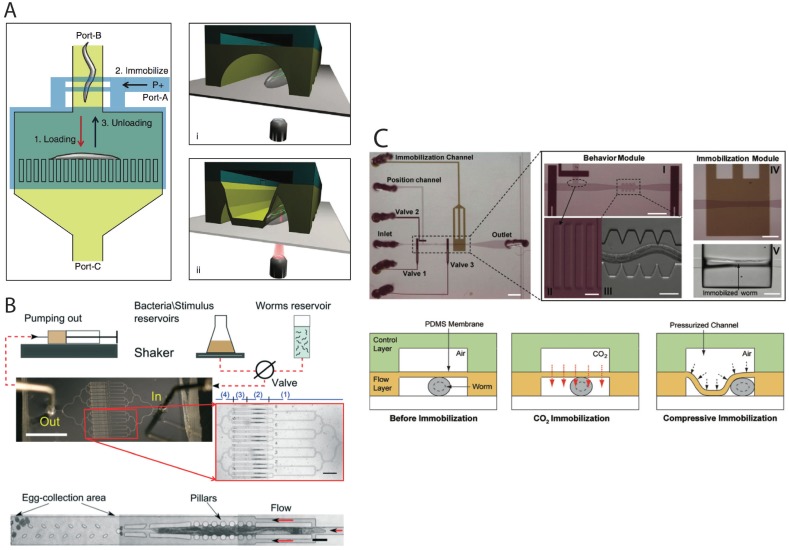Figure 3.
Microfluidic devices to immobilize C. elegans using (A) deflectable membrane (Gilleland et al. [33]; (B) tapered microchannels (Kopito and Levine [34]); or (C) CO2 exposure (Chokshi et al. [35]. Reproduced with permissions from The Royal Society of Chemistry and Macmillan Publishers Ltd. Nature Protocols. Panel (A) shows the chip containing an array of narrow channels to apply suction pressure. Worm is loaded/removed through port-B and restrained by the narrow channel array. Pressure through port-A causes the compression layer to move downwards and immobilize the worm (explained on the right). Releasing the pressure allows the worm to be recovered. The WormSpa device, in panel (B), contains four regions for worm loading and distribution (1), egg chambers (2), egg collection (3), and outflow (4). The device for CO2 based immobilization is shown in panel (C). It contains modules for behaviour assay (first row of pictures) and immobilization (second row of pictures). Refer to respective references for more details.

